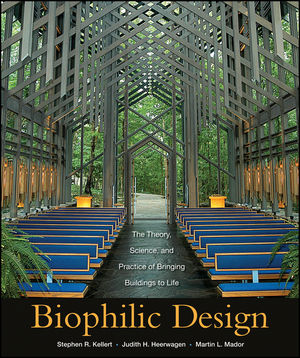Biophilic Design: The Theory, Science and Practice of Bringing Buildings to LifeISBN: 978-0-470-16334-4
Hardcover
432 pages
April 2013
 |
||||||
"…Kellert asserts that people "learn better, work more comfortably, and recuperate more successfully in buildings that echo the environment in which the human species evolved." He says there are a number of ways to improve worker productivity and retention and reduce absenteeism. The most basic step is to improve the availability of natural light. Kellert is analyzing the effect of biophilic design on office work productivity, absenteeism, number of sick days. Kellert believes there is a definite connection between biophilic spaces and improved productivity, and some studies point to a positive relationship." (dirt.asla.org, September 2009)
"By applying biophilia to design, the editors and contributors hope to go beyond the standard green architecture goal of simply lowering the environmental impact of buildings. They hope to enhance the human relationship with nature through buildings believing, that one's affinity for light or water should be incorporated into the placement of windows. The book is divided into three parts. The first provides a theory of biophilic design and offers general guidelines. The second offers a more focused look at health issues and the role of nature. The third examines applied instances of biophilic design. Summing Up: Recommended" (Choice, September 2009)
"These authors urge architects to do what they can to incorporate nature in the design of buildings." (GreenSource, April 2009)
"Biophilic Design collects descriptions of current destructive practices, analyzes their roots in human nature, and offers low-cost, low-impact strategies for change." (Architecture Boston; Nov/Dec 2008)
"Stephen Kellert's Biophilic Design…brings together biologists, ecologists, psychologists, architects, designers and city planners to probe the confluence of people, nature and design." (Miller-McCune.com, 7/14/08)
"Make no mistake: Biophilic Design, all 400 pages of it, is one of the best design books of this decade." (New Urban News, April-May 2008)



